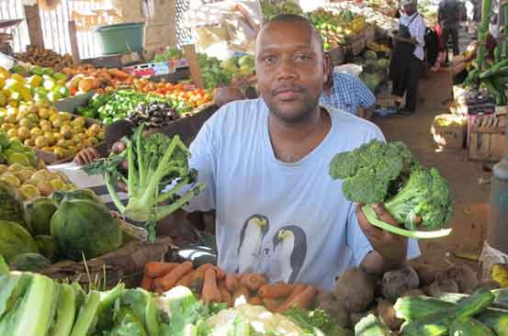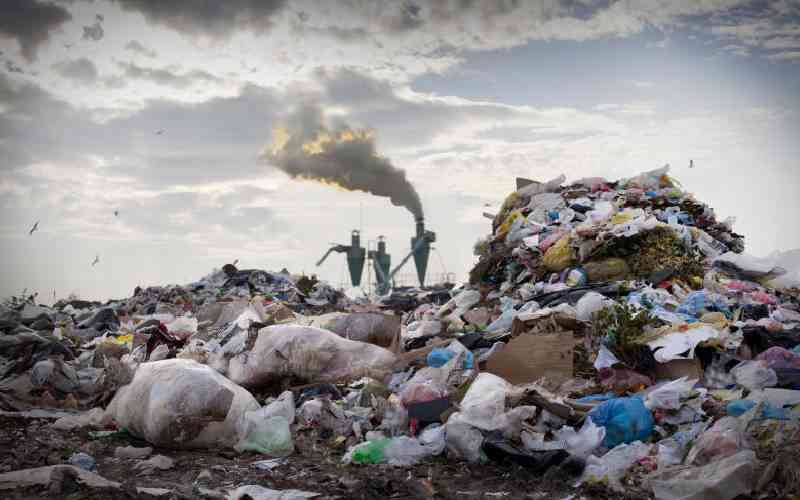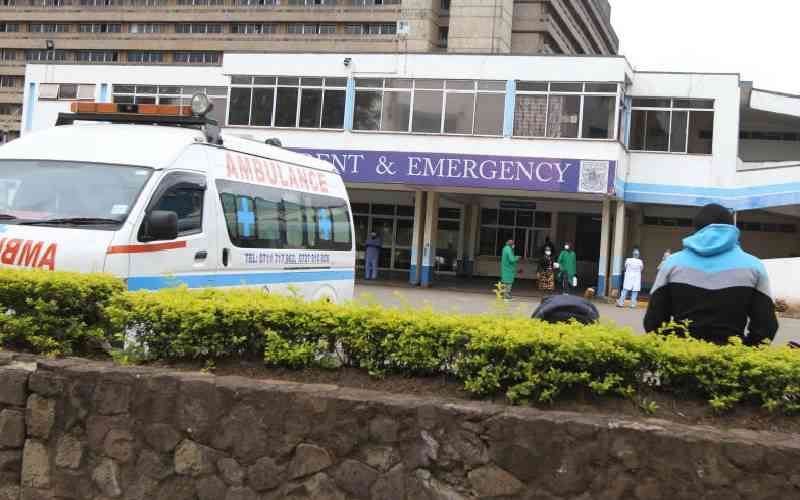
You have probably had a boorish matatu crew on your route raise fares arbitrarily, then blame it on the rise in fuel prices – “mafuta imepanda”.
That brash behaviour from matatu crew sets everyone’s teeth on edge, even if it is a small price hike – by Sh10 or so for the inner city routes, or between Sh50 and Sh100 for the longer countryside trips.
But what you have been less likely to notice is your local mama mboga quietly making her pyramids of tomatoes smaller, then selling them at the same price, or using a smaller polythene bag to bundle your carrots.
We looked at price data of some basic commodities from the Kenya National Bureau of Statistics (KNBS) over the past 10 years, and calculated the percentage change in price between 2005 and 2015, as well as the compounded annual change in price, year on year.
We have discovered that contrary to what you might expect, fuel – in form of petrol and kerosene – has had some of the lowest price increases of the selected items in this consumer basket.
Going by 2015 data, petrol is only 33 per cent more expensive than it was a decade ago, and for kerosene it is even lower, at 10.2 per cent. The Energy Regulatory Commission’s (ERC) rates have kept the trends in fuel prices well below those of other commodities, restraining inflation in that segment as a matter of policy. If you pay attention to the ERC’s monthly price adjustments, you might think fuel prices are inevitably rising. But on long-term trends, and especially relative to the prices of other commodities, they are not.
The longer view
What has experienced sharp and sustained rise in prices is agricultural fresh produce, and the fact that there is no monthly news bulletin on the prices of these commodities means you may have missed the longer view of just how much you are paying for your groceries.
And perhaps your mama mboga’s kind smile, and the warm camaraderie at the market, may have distracted you from it.
According to 2015 KNBS data, tomatoes are nearly three times as expensive as they were a decade earlier. In 2005, they were retailing at Sh39.75 per kg. Now, you are looking at paying Sh107.31 for the same.
That’s nearly a 170 per cent difference. Over that period, every year tomatoes have been 10.4 per cent more expensive than they were the previous year. The same goes for carrots that were retailing at Sh28.05 in 2005; 10 years later, they were nearly triple as much, at Sh75.44. That works out to a difference of almost 169 per cent, and like tomatoes it means that every year, carrots are more than 10 per cent more expensive than they were the previous year.
Onions, dry beans and meat (beef with bones in this data set) are all nearly three times as expensive as they were a decade ago, with price increases of between 160-165 per cent. All the while, the average wage earnings per employee has had a much more modest increase over the same period of time – no wonder you may be struggling to make ends meet.
KNBS data shows the average monthly earnings of workers have risen from Sh24,524 ten years ago, to Sh50,187 per month, a 104.6 per cent increase, or just about double.
Disparity
This, of course, masks great disparity in earnings between workers, not to mention the fact that poor people spend a greater percentage of their income on food. It means that low-income earners will be especially hard hit by high food prices. The wage inflation hasn’t kept up with the prices of agricultural produce, but is about at par with the increase in the price of bread, which has doubled from about Sh23 for a 400g loaf, to Sh48 in that 10-year period.
]It has also kept pace with the prices of eggs, milk, maize flour and sugar, whose price inflation has been below that of income, implying that on these relative measures alone, an average worker can continue to afford them.
Why have the prices of fresh produce risen so rapidly in the past 10 years? Partly, it has to do with the fact that commodities such as petrol, diesel and kerosene are subject to the regulation of the ERC, and so are somewhat insulated from the pressures of hard market forces. The prices of maize flour is also externally influenced by the National Cereals and Produce Board (NCPB), which sets a price floor for maize purchases; the same goes for milk, which is impacted by the dynamics of the Kenya Cooperative Creameries (KCC) and other local and private dairy cooperatives.
Fresh produce has no such ‘cushion’; we don’t have a comparable National Tomatoes Board that dictates minimum prices.
But there’s something else at play here. Kenya is urbanising quickly – it is estimated that 27 per cent of the country’s population is urban, which is expected to cross the 50 per cent mark by 2050 according to data from the World Bank.
Contrary to what you might expect, city dwellers eat more fruits, vegetables, meat and fish that those living in the rural areas, and less cereals and pulses.
It is a factor of the dynamics of rural poverty. Ninety per cent of Kenyans in the bottom 40 per cent of the income distribution live in rural areas.
Though the rural poor may have the land and the harvest, they need money much more than they need the produce. It results in an ironic situation where farmers actually eat less fresh produce, proportionally, than those in the cities.
The price inflation of agricultural commodities could therefore be a factor of increased demand as people move into the cities, and have more disposable income to spend fruits, vegetables and meat.
In many African cities, the domestic food market is becoming more attractive for farmers than traditional export cash crops, says data from the African Development Bank. The non-agricultural post-harvest activities of the food economy, such as processing, logistics and retail, are also developing quickly.
No wonder, then, that some of the fastest growing media products are magazines and pull-outs on agribusiness, as a younger demographic of farmers break agriculture free from the stereotype of rural drudgery, and try to commercialise it into something cool. But there’s another little appreciated trend that has shaped urban growth in Africa, and is acting as a brake on cities’ reaping the benefits of growth, and driving the prices of basic commodities, especially fresh produce, upwards.
It is urban sprawl. In several African cities – Nairobi and other Kenyan towns included – the rate of physical expansion (going by land area) has been faster than that of population growth.
In other words, city growth has been fragmented and sparse. Despite rapid population growth, the rate of expansion of built-up areas is even faster. This means that many African cities are actually becoming less, not more dense, sustained and intensified by an unlikely factor: the presence of the motorcycle taxi or bodaboda.
The landlord business
Typically residential areas used to be built in areas with some level of accessibility – near a road, a railway, or a walking distance from a bus stop. But now, you don’t even need a road to build a housing complex – all you need is a path that a boda boda can pass over and you are in the landlord business. This kind of urban sprawl, if not well managed, decreases the benefits of connectivity within urban areas.
Cities are typically engines of a country’s economic growth, because labour productivity is higher in towns than in the rural areas. But a sprawling city means that distances between neighbourhoods are long and transport costs are high.
A resident of Nairobi, on average, can reach no more than 8 per cent of all jobs available in the city within 45 minutes, shows data from AfDB. By contrast, in greater London in 2013, this figure was 21.6 per cent.
Around Nairobi and other big towns, you will notice that fresh produce is often transported either by handcart or by motorcycle. Though on the surface they seem cheap, they are hugely inefficient from a technological perspective, particularly if you are transporting perishable goods like fruit and vegetables.
In other words, food prices are a reflection of the cost of getting it around much more than the cost of producing it.
The result is a ‘mkokoteni-bodaboda vicious cycle’ – cities continue spreading out because the boda boda makes it convenient to do so, but in the process they are unable to build the critical mass to make mass transport economically viable.
In other words, one could argue that tomatoes and carrots are the early warning signals that tell us something is fundamentally wrong with the way we are structuring our cities.
—Christine Mungai is a writer, journalist and executive editor of Africa data visualiser and explainer site Africapedia.com. Email: [email protected]
 The Standard Group Plc is a multi-media organization with investments in media platforms spanning newspaper print
operations, television, radio broadcasting, digital and online services. The Standard Group is recognized as a
leading multi-media house in Kenya with a key influence in matters of national and international interest.
The Standard Group Plc is a multi-media organization with investments in media platforms spanning newspaper print
operations, television, radio broadcasting, digital and online services. The Standard Group is recognized as a
leading multi-media house in Kenya with a key influence in matters of national and international interest.











